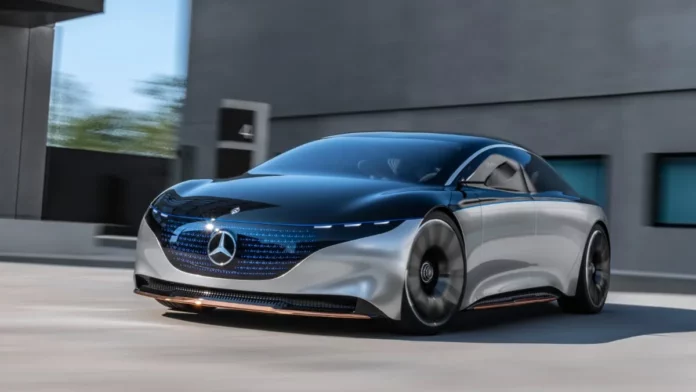German carmaker Mercedes-Benz has teamed up with technology giant Google to provide “supercomputer-like performance” in every car with automated driving sensors, as it seeks to rival Tesla and Chinese newcomers in the automotive industry.
The partnership with Google will enable Mercedes-Benz to offer traffic information and automatic rerouting in its cars. The collaboration also allows drivers to watch YouTube on the car’s entertainment system when the car is parked or in Level 3 autonomous driving mode.
Partnership with Nvidia
Mercedes-Benz agreed to share revenue with semiconductor maker Nvidia, its partner on automated driving software since 2020, to lower the upfront cost of buying expensive high-powered semiconductors. Chief Executive Ola Kaellenius reasoned that even if drivers did not use every feature enabled by the microprocessor, the sunk costs would be negligible. Customers who pay for an additional option package will have automobiles outfitted with Lidar sensor technology and other gear enabling autonomous “Level 3” driving, which has a higher variable cost.
Deal with Luminar Technologies
Mercedes-Benz also announced that it had struck a multi-billion-dollar deal with self-driving sensor maker Luminar Technologies to integrate its sensors across a broad range of its vehicles by the middle of the decade. Luminar Technologies’ sensors are capable of detecting objects at a distance of up to 250 meters and in low-light conditions, making them ideal for Level 3 autonomous driving. The partnership will help Mercedes-Benz to enhance its self-driving capabilities and increase the safety of its vehicles.
MB.OS Operating System
Mercedes-remarks Benz emphasised the strategy behind the carmakers’ years-long attempt to migrate from a patchwork approach combining software from a variety of vendors to controlling the core of its software and bringing partners in during a software update day in Sunnyvale, California. In 2022, the firm produced over one billion euros ($1.06 billion) in software-enabled sales and anticipates that figure to increase to the high single-digit billion euro range by 2030, once its new MB.OS operating system is released in the middle of the decade. Mercedes-Benz will be able to combine all of its software and hardware components and provide a smooth and intuitive user experience thanks to the new operating system.
Hyper screens
All vehicles on Mercedes-Benz’s upcoming modular architecture platform will have so-called hyper screens extending across the cockpit of the car, the company said on Wednesday. The hyper screens will provide drivers with a digital cockpit that integrates multiple displays, including an instrument cluster, infotainment system, and other controls. The company’s vision is to offer a fully immersive driving experience that is intuitive, customizable, and safe.
Conclusion
Mercedes-Benz’s partnership with Google and Luminar Technologies, as well as its investment in its MB.OS operating system demonstrates the company’s commitment to enhancing its navigation and automated driving features. The company’s focus on enhancing the user experience and offering innovative features like hyper screens will help it to differentiate itself in a crowded marketplace.
Follow and connect with us on Facebook, LinkedIn & Twitter.

